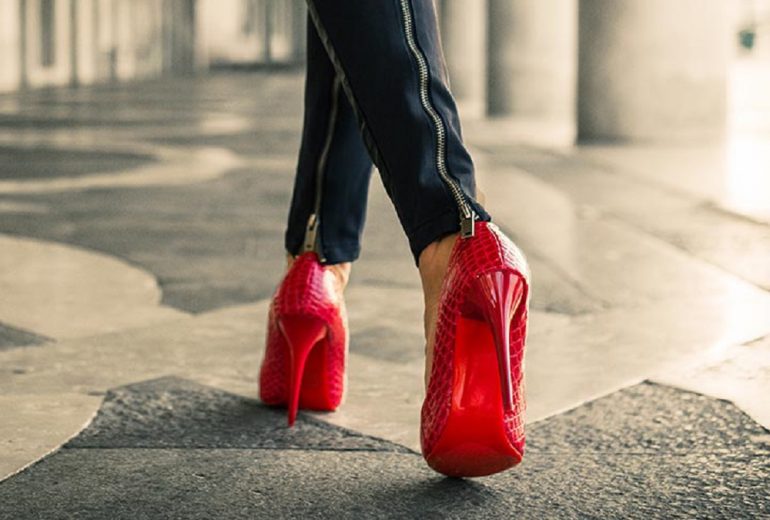Brands are offering a wider variety of flats than ever, elevating what was once a casual work alternative or a commuting shoe to one that’s acceptable for more formal social occasions.
SEE ALSO : Luxury shoes are never enough for Chinese consumers
According to NPD Retail Tracking Service, last year U.S. high-heel sales dropped 11% over 2016.
Meanwhile, the selection of chic flats has become extraordinarily rich and varied.
Whereas once vertiginous heels were the obligatory choice for events like weddings or panel presentations, today a dressed-up flat like the satin Balenciaga Slash slide fits in just fine.
“Designers have been looking at bringing in more fashion, more trend, more design into a flat so it doesn’t look like a basic but it becomes a special option,” said Roopal Patel, fashion director of Saks Fifth Avenue.
Flats are no longer the sad, casual Jan Brady to Marcia’s superior heel; they can be equally fabulous, and comfortable to boot.
High heels originated as a way to help 10th-century Persian soldiers secure their feet in stirrups, before becoming the preferred shoe for 16th-century male European aristocrats eager to look taller and more formidable.
Women soon adopted the style, and in modern times heels became inextricably linked with femininity.
“Women have always been wearing flats,” said Ms. Patel. “But what we’re starting to see is women wearing them from the minute they leave the house to the minute they come home. There is no shoe change any more.”
Lily Hanbury, co-founder of Le Monde Beryl shoes, argued that footwear “should be chic enough to take you to anything you’re going to that day.” Ms. Hanbury launched her signature flat based on a traditional Venetian slipper in 2016, ideal for busy, style-minded women.
“What we’re seeing in the past few years is that women are more conscious of being healthful when it comes to their feet,” explained Dr. Neal Blitz, a podiatrist in the US.“Women just want to be active,” he said. “It’s not just about looking good in heels any more.”
Shoe designer Tabitha Simmons, who counts her Hermione Mary Jane flats among her best-selling styles, would agree: “Everyone was tottering around on platforms for such a long time that it swung the opposite way, and women started wearing more wearable footwear.”
SEE ALSO : Is it the end of shoelaces?
Dress codes have also shifted in the age of #MeToo.
In 2016 when then-27-year-old Nicola Thorp reported for a temp job at PricewaterhouseCoopers in London, her supervisor told her heels were mandatory. After being asked to leave, Ms. Thorp started a petition protesting such archaic dress codes, which was investigated by two Parliament committees. The outcome: The temp agency Portico that demanded heels changed its rules, and calls were made for tougher laws against dress discrimination.
Shipley Salewski, 39, a San Francisco-based educator and consultant, recently stopped wearing heels to meetings of the mostly male charity board she chairs, replacing them with a rotation of dressy flats including magenta satin Delpozo mules and sparkly Malone Soulier ballerinas.
“The flats I wear in that professional setting are definitely elevated flats, they’re not boring flats. That’s a distinction. I like beautiful things, I like to look like I tried and I also like to not fall over.”
(Source: The Wall Street Journal)




